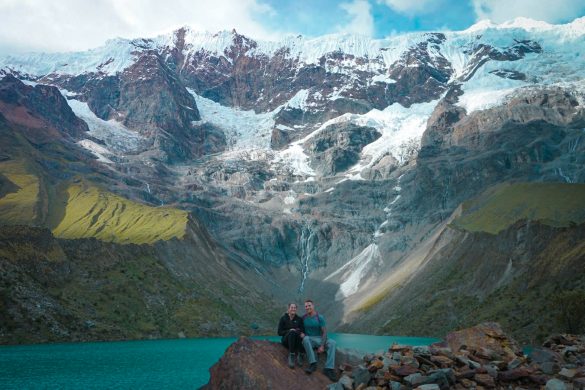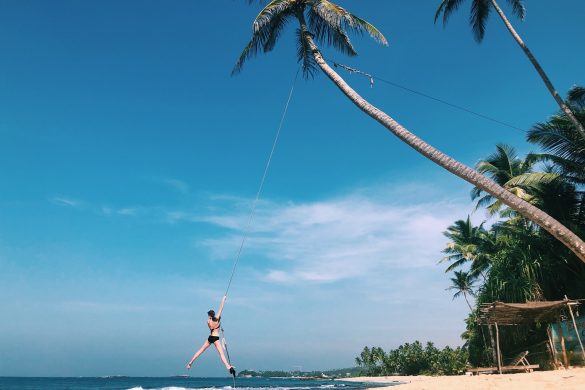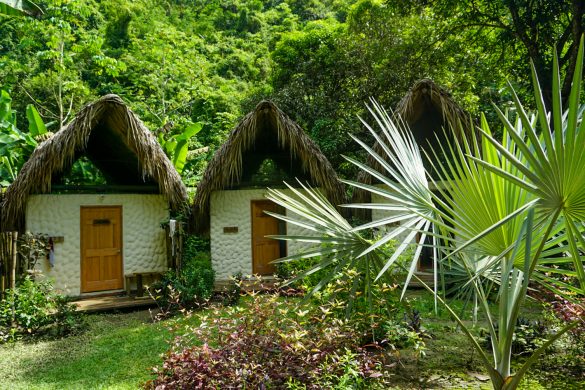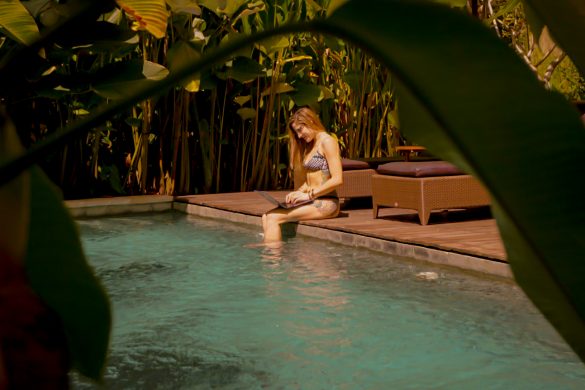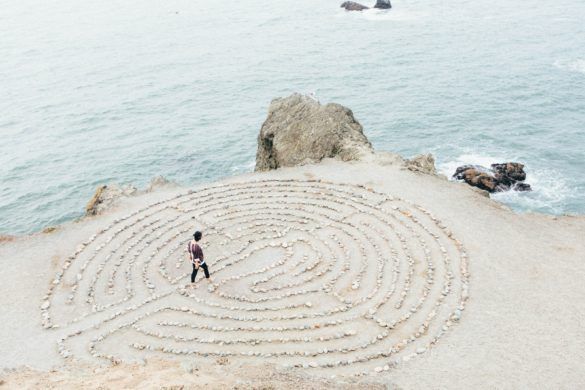- Yoga for Beginners: A Breakdown of Major Styles and Terminology
There are so many different types of yoga. I’ve joined classes not realizing how difficult it would be, and ended up tearing up halfway through, as my muscles spasmed from exertion. Other courses I’ve taken turned out to be more meditative than I bargained for…and I woke myself up snoring (oops!!)
How can you tell the difference between Anusara and Ashtanga? Or hot yoga and hatha? There are more than 12 popular types of yoga taught regularly in the western world. Here’s a quick cheat-sheet to help you navigate through a class schedule, and help you find the type your body is craving:
(At the bottom of this article is a section on Yoga Terminology!)
Table of contents
Major Styles of Yoga
Hatha Yoga
Hatha is a Sanskrit word that is used to embody all physical postures in yoga.
Nearly every type of yoga taught in the west is “hatha” yoga. Hatha is simply a generic term that refers to a class that teaches yoga postures. Simple right?
This means that when a class is marked as “hatha”, it probably means you will get an introduction to yogas basic postures! These classes are a great entry point for a true beginner to yoga.
There are other branches of yoga such as kriya, raja, and karma yoga that are separate from the physical-based yoga practice. These types of yoga are not physical and refer to the more spiritual side of yogic philosophy.

Yin Yoga
Yin is a very slow-paced yoga with seated postures held for minutes at a time. It’s a wonderful, albeit sometimes painful form of yoga that is also great for beginners.
Yin is also very meditative, as the postures are held for 45 seconds, 2 minutes, or even 5 minutes at a time. Yin yoga uses gravity to do most of the stretching, and is a very gentle type of yoga.
Ashtanga Yoga
Ashtanga means “eight limb path” in Sanskrit.
Ashtanga is a very rigorous and physically demanding style of yoga that was popularized in the 1970’s when it was brought to the west. I would not recommend this course to an absolute beginner. Ashtanga always performs the same exact poses in the same exact order. It begins with 5 Sun-Salutation A’s, 5 Sun-Salutation-B’s and then a series of standing and floor poses.
If you come across Mysore-led Ashtanga, you are expected to know the series, and meet to practice at your own pace.
The 8 Limbs of Ashtanga Yoga are:
- Yama, which relates to ethics.
- Niyama, which is about self discipline.
- Asana (poses)
- Samadhi (oneness in meditation)
- Pranayama (breathing)
- Pratyahara, which means to gain control over external influences
- Dharana (focus meditation)
- Dhyana (absorption meditation)
Vinyasa Yoga (Power Yoga)
Vinyasa is the most athletic yoga style. In Sanskrit, vinyasa means “to place in a special way”, referring to the series of poses that characterizes this form of heath yoga.
This yoga style was adapted from Ashtanga yoga in the 1980’s. It is characterized by breath-to-movement. Vinyasa classes are known for their fluid, movement-intensive practices.
Vinyasa courses often have music playing, and are as intense as Ashtanga classes, without the rigidity of routine. No two vinyasa courses are the same, and many types of yoga can also be considered Vinyasa flows such as power yoga and prana.

Bikram / Hot Yoga
Bikram yoga is a series of 26 poses, performed twice. That doesn’t sound too hard or different, until the artificial heat comes into play. Bikram is taught in 105 / 41 degree temperature and 40% humidity.
Bikram Choudhury developed this practice about 30 years ago. It’s wildly popular in the US and quite easy to find, though a bit controversial. In the past, BIkram has sued studios that don’t follow his 26-sequence flow yet practice hot yoga & call it “bikram yoga”. If you see a yoga class marketed as “Hot” yoga, it will probably differ from Bikram in some small way.
Hot yoga requires an extra towel on top of your mat to prevent slippage, as well as a water bottle (you will need this!)
Prenatal Yoga
Prenatal yoga focuses on positions that are specifically designed for pregnant women’s bodies. This style differs from others in that:
- Positions with wide stances are modified or discontinued to not put extenuating pressure on the pelvic bones and joints
- Breathing for labor is taught and emphasized
- Certain positions & asanas are taught that strengthen the body for labor
- Focuses on relieving pressure on hips, back and shoulders

IyengarYoga
Iyengar is all about precision. It’s great for the beginner yogi, as well as those with physical disabilities or that need a slower, gentler style of yoga. Expect the use of props and blocks, blankets and chairs! It is expected to be fully relaxed in this style of yoga .
It is a common style to teach to people with disabilities and the elderly, and can often be found in rehab centers.
Restorative Yoga
Most restorative practices are based on the teachings of B.K.S. Iyengar. (same as above) Restorative yoga is a practice that is all about slowing down and opening your body through passive stretching. You may hold a pose for up to 20 minutes at a time, so the lots of blankets and warm clothing are essential for this practice. While most hatha-style yogas are about movement and flow, this style will usually only have about 6 poses per class, and is all about relaxation and meditation.
Lots of props and blankets are essential to restorative yoga to keep the body comfortable. Since this style focuses on relaxation, expect the lights to be be dimmed and soft, gentle music played. (Night, night!)
Anusara Yoga
The mind-body-heart connection is most important in Anusara yoga.
Anusara yoga is an American-born yoga style developed in 1997 by John Friend. This style has a focus on our “intrinsic goodness”. The classes are formatted to use the physical practice of yoga to help students open their hearts and let their inner goodness shine through. It is most similar to Vinyasa yoga in that it focuses on alignment.

Spiritual Yoga Types
Kundalini Yoga
Kundalini, or “coiled one”, is our primal energy located in energy centers, called chakras, along the spine. Kundalini yoga is considered to be one of the most powerful forms of yoga because it aims to awaken and move this energy along the spine, freeing it from trapped areas, and allowing for spiritual awakening.
Kundalini yoga focuses on breath work, including alternate-nostril breathing, called nadi sodhana. Kundalini style combines meditation, mantra, physical exercises and breathing techniques; each exercise is called a kriya and is synchronized with breath.
Jivamukti Yoga
Jivamukti is a vinyasa style yoga, infused with Hindi spiritual teaching. It is one of the most ‘complete’ forms of yoga, (besides Kundalini) in that it combines the physical aspect of yoga with spiritual tenets and lifestyle teachings.
The 5 tenets of Jivamikti are:
- Shastra (scripture)
- Bhakti (devotion)
- Ashimsa (nonvivolence, non-harming)
- Nada (music)
- Dhyana (meditation)
Sivananda Yoga
Sivananda is an unofficial form of Hatha Yoga that incorporates 5 principals:
- exercise (Asana),
- proper eating,
- proper relaxation (Savasana),
- proper breathing (Pranayama)
- positive thinking and meditation.
Sivananda yoga is part of a holistic health regiment that focuses on relief and breath. It incorporates cultivating positivity into physical exercise. This practice typically involves 12 basic asanas.
Yoga Terminology
Ever looked through a yoga description only to understand about half of what you are reading? Here are some yoga terms that you might come across:
- Akasha –ether or space. Part of the five elements the physical universe is composed of.
- Asana –yoga poses or postures. Asanas open the energy channels and bring about balance in body and mind
- Chakra –energy centres or wheels of energies in the body
- Chaturanga –low plank
- Drishti – point of focus of the eyes during your yoga asana practice. It is meant to focus the mind and to prevent distractions;
- Mantra- word, sound or phrase repeated either out loud or in the mind to increase focus while meditating
- Monkey Mind– a mind that jumps from one thought to another. Yoga is meant to calm this thought process
- Mudra -gestures(hand positions), used to aid concentration, focus and connection to yourself during your meditation and asana practice.
- Nadi – energy channels or meridians that prana flows through
- Namaste– Indian greeting meaning ‘the higher consciousness in me greets the higher consciousness in you’.
- Prana -life energy or life force in all living things. Also called Qi / Ki or Chi in Eastern traditions
- Pranayama– breathing exercises which clear the physical and emotional obstacles in our body to free prana energy
- Savasana– Corpse pose. Settles Nervous system & helps assimilate any changes brought on in your practic
- Sun Salutations– sequence of asanas performed at the beginning of a yoga class to create heat in the body.
- Ujjayi – type of breathing commonly translated as the victorious breath or ocean breath. Encourages awareness on the breath.
Remember, any style of yoga can be perfectly suitable for beginners as long as it’s designated a “beginner” class. Otherwise, just give your instructor a heads up before class, and have a blast. Relax- everyone is focusing on themselves, so no one will notice whether its your first time or not anyway 🙂


